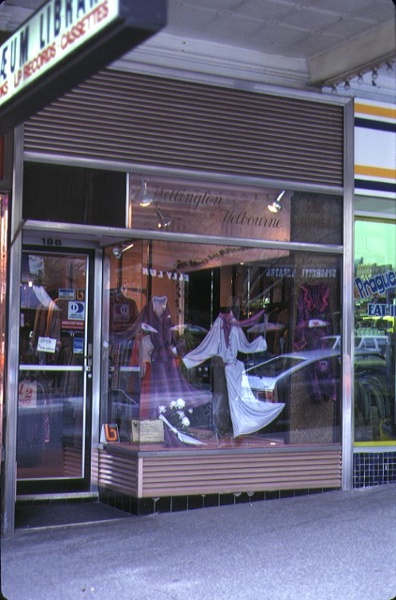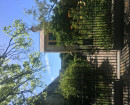Back to search results
MELBOURNE ATHENAEUM
184 - 192 COLLINS STREET MELBOURNE, MELBOURNE CITY
MELBOURNE ATHENAEUM
184 - 192 COLLINS STREET MELBOURNE, MELBOURNE CITY
All information on this page is maintained by Heritage Victoria.
Click below for their website and contact details.
Victorian Heritage Register
-
Add to tour
You must log in to do that.
-
Share
-
Shortlist place
You must log in to do that.
- Download report

THE ATHENAEUM BUILDING SOHE 2008





On this page:
Statement of Significance
What is significant?
The Melbourne Athenaeum began as Melbourne's original Mechanic's Institute in 1842. The three-storey section facing Collins Street has a stuccoed facade with pilasters, label moulds, a bracketed cornice and a parapet with niche containing a statue of Athena and was completed in 1886 to a design by Smith and Johnson. The building retains evidence of each phase of its development –the 1842 Mechanics Institute, the 1857 two single storey wings extending to Collins Street, the 1872 large hall at the rear, the 1886 Collins Street facade, and the 1924 renovations which remodelled the rear hall as a theatre (cinema) and added the canopy to Collins Street. There are interior features and decorative details throughout the building from various stages of its history, demonstrating its longevity and flexibility. The lift is an early surviving example of the use of the technology.
How is it significant?
The Melbourne Athenaeum is of historical and architectural significance to the State of Victoria. It satisfies the following criterion for inclusion in the VHR:
Criterion A
Importance to the course, or pattern, of Victoria’s cultural history.
Criterion D
Importance in demonstrating the principal characteristics of a class of cultural places and objects
Criterion H
Special association with the life or works of a person, or group of persons, of importance in Victoria’s history.
Why is it significant?
The Melbourne Athenaeum is historically significant for its role in Victoria’s cultural history. The initial building on this site was opened in 1842, just four years after the establishment of Melbourne, and housed both a library and theatre, uses which continue to this day and define the building within the Melbourne social and cultural sphere. Additionally, it is significant as the meeting place of the Melbourne City Council between 1842 and 1852 prior to construction of its own premises and as one of the first places in Victoria to exhibit films with soundtracks (“talkies”) in 1929. (Criterion A)
The Melbourne Athenaeum is architecturally significant as a fine and unusually late example of the Renaissance Revival style. The external facade, in its present state, was completed in 1872 and is central to the building's historic and architectural significance. At the top of the facade is a prominent alcove containing the statue of a woman figure, variously described as that of Athena or Minerva, placed there in 1887. The Library, theatres and lift reflect the evolution of the building use over time. Adaptations made during the 1920s are indicative of the introduction of cinema. (Criterion D).
The Melbourne Athenaeum is historically significant as the home of the earliest public institution in Victoria being The Melbourne Atheneum Inc, formerly The Melbourne Mechanics' Institute and School of Arts. The organisation has continually operated the building as a place of education, gathering and entertainment since 1842. (Criterion H)
Show more
Show less
-
-
MELBOURNE ATHENAEUM - History
History of Place:
In August 1840 the Melbourne Mechanics Institution purchased 110 feet of frontage to Collins Street, running back to Little Collins Street, for 285 pounds. The first building was completed in December 1842, a two storey brick building known as the Hall of Arts. The Municipal Council occupied the ground floor until 1852. The Institute received an annual grant of 150 pounds from the government and in 1854 received 5000 pounds towards the cost of a new building. From 1857 it had to rely on its own resources. In 1851 there were 488 members. It was also the headquarters of the First Church of Christ, Scientist. In 1855 the new building was begun, but only the front was completed. The hall to be built at the rear was to be to a design by Charles Webb, but financial problems meant that only alterations to the existing building were executed. The new hall was left until 1871 and finished in 1872. The architect was Alfred Smith, and the builders were Turnbull and Dick. The Institution renamed itself the Melbourne Athenaeum in 1873. Scots Church were the first occupiers whilst its own church was being rebuilt(?). In 1877 membership had grown to 1681. The remodelled facade was finally completed in 1886. The statue of Minerva was from a gift of 100 guineas and was modelled by Mr Kretzschmar. The theatre at the rear was converted to a cinema in 1924 to the design of leading theatre architect H E White. It was subsequently converted back again. The verandah was erected in early 1920s but entailed destruction of trees to Collins Street.
Associated People: Captain Lonsdale (first president)MELBOURNE ATHENAEUM - Permit Exemptions
General Exemptions:General exemptions apply to all places and objects included in the Victorian Heritage Register (VHR). General exemptions have been designed to allow everyday activities, maintenance and changes to your property, which don’t harm its cultural heritage significance, to proceed without the need to obtain approvals under the Heritage Act 2017.Places of worship: In some circumstances, you can alter a place of worship to accommodate religious practices without a permit, but you must notify the Executive Director of Heritage Victoria before you start the works or activities at least 20 business days before the works or activities are to commence.Subdivision/consolidation: Permit exemptions exist for some subdivisions and consolidations. If the subdivision or consolidation is in accordance with a planning permit granted under Part 4 of the Planning and Environment Act 1987 and the application for the planning permit was referred to the Executive Director of Heritage Victoria as a determining referral authority, a permit is not required.Specific exemptions may also apply to your registered place or object. If applicable, these are listed below. Specific exemptions are tailored to the conservation and management needs of an individual registered place or object and set out works and activities that are exempt from the requirements of a permit. Specific exemptions prevail if they conflict with general exemptions. Find out more about heritage permit exemptions here.Specific Exemptions:Specific Exemptions
Exempt works and activitiesThe below permit exemptions are not considered to cause harm to the cultural heritage significance of the place subject to the conditions and guidelines below:- Removal or replacement of the commercial kitchen in the ground floor restaurant tenancy. Must comply with the category conditions of general exemptions Category 4. Internal Fitouts.
- Removal or replacement of security grilles to openings on the Collins Street facade. Must comply with the category conditions of general exemptions Category 7. Safety and security.
- Removal and replacement of information, directional and advertising signage within existing signage cases on the Collins Street frontage. Must comply with the category conditions of general exemptions Category 11. Signage.
- Non-structural alterations to existing flagpoles.
- Removal of external extraneous items such as non original lighting, pipework, ducting, wiring and bird proofing devices, and making good, from side elevations
- Installation of external roof safety access walkways and platforms required to comply with health and safety legislation provided these are not visible from ground level
- Repair of theatre seats and upholstery in the main theatre.
Conditions for permit exemptions- All works or activities permitted under specific exemptions must be planned and carried out in a manner which prevents harm to the registered place or object. Harm includes moving, removing or damaging any part of the registered place or object that contributes to its cultural heritage significance.
- If during the carrying out of works or activities in accordance with specific exemptions original or previously hidden or inaccessible details of the registered place are revealed relating to its cultural heritage significance, including but not limited to historical archaeological remains, such as features, deposits or artefacts, then works must cease and Heritage Victoria notified as soon as possible.
- If during the carrying out of works or activities in accordance with specific exemptions any Aboriginal cultural heritage is discovered or exposed at any time, all works must cease and the Secretary (as defined in the Aboriginal Heritage Act 2006 (Vic)) must be contacted immediately to ascertain requirements under the Aboriginal Heritage Act 2006 (Vic).
- If during the carrying out of works or activities in accordance with specific exemptions any munitions or other potentially explosive artefacts are discovered, Victoria Police is to be immediately alerted and the site is to be immediately cleared of all personnel.
- If during the carrying out of works or activities in accordance with specific exemptions any suspected human remains are found the works or activities must cease. The remains must be left in place and protected from harm or damage. Victoria Police and the State Coroner’s Office must be notified immediately. If there are reasonable grounds to believe that the remains are Aboriginal, the State Emergency Control Centre must be immediately notified on 1300 888 544, and, as required under s.17(3)(b) of the Aboriginal Heritage Act 2006 (Vic), all details about the location and nature of the human remains must be provided to the Secretary (as defined in the Aboriginal Heritage Act 2006 (Vic)).
Permit exemption guidelines- Where there is an inconsistency between permit exemptions specific to the registered place or object (‘specific exemptions’) established in accordance with either section 49(3) or section 92(3) of the Heritage Act 2017 (Vic) and general exemptions established in accordance with section 92(1) of the Heritage Act 2017 (Vic) specific exemptions will prevail to the extent of any inconsistency.
- In specific exemptions, words have the same meaning as in the Heritage Act 2017 (Vic), unless otherwise indicated. Where there is an inconsistency between specific exemptions and the Heritage Act 2017 (Vic), the Heritage Act 2017 (Vic) will prevail to the extent of any inconsistency.
- Nothing in specific exemptions obviates the responsibility of a proponent to obtain the consent of the owner of the registered place or object, or if the registered place or object is situated on Crown Land the land manager as defined in the Crown Land (Reserves) Act 1978 (Vic), prior to undertaking works or activities in accordance with specific exemptions.
- If a Cultural Heritage Management Plan in accordance with the Aboriginal Heritage Act 2006 (Vic) is required for works covered by specific exemptions, specific exemptions will apply only if the Cultural Heritage Management Plan has been approved prior to works or activities commencing. Where there is an inconsistency between specific exemptions and a Cultural Heritage Management Plan for the relevant works and activities, Heritage Victoria must be contacted for advice on the appropriate approval pathway.
- Specific exemptions do not constitute approvals, authorisations or exemptions under any other legislation, Local Government, State Government or Commonwealth Government requirements, including but not limited to the Planning and Environment Act 1987 (Vic), the Aboriginal Heritage Act 2006 (Vic), and the Environment Protection and Biodiversity Conservation Act 1999 (Cth). Nothing in this declaration exempts owners or their agents from the responsibility to obtain relevant planning, building or environmental approvals from the responsible authority where applicable.
- Care should be taken when working with heritage buildings and objects, as historic fabric may contain dangerous and poisonous materials (for example lead paint and asbestos). Appropriate personal protective equipment should be worn at all times. If you are unsure, seek advice from a qualified heritage architect, heritage consultant or local Council heritage advisor.
- The presence of unsafe materials (for example asbestos, lead paint etc) at a registered place or object does not automatically exempt remedial works or activities in accordance with this category. Approvals under Part 5 of the Heritage Act 2017 (Vic) must be obtained to undertake works or activities that are not expressly exempted by the below specific exemptions.
- All works should be informed by a Conservation Management Plan prepared for the place. The Executive Director is not bound by any plan, and permits still must be obtained for works suggested in any Conservation Management Plan.
MELBOURNE ATHENAEUM - Permit Exemption Policy
A heritage permit is required for all works and activities undertaken in relation to VHR places and objects. Certain works and activities are exempt from a heritage permit, if the proposed works will not harm the cultural heritage significance of the heritage place or object.
-
-
-
-
-
ROSAVILLE
 Victorian Heritage Register H0408
Victorian Heritage Register H0408 -
TRADES HALL
 Victorian Heritage Register H0663
Victorian Heritage Register H0663 -
FORMER BAPTIST CHURCH HOUSE
 Victorian Heritage Register H0003
Victorian Heritage Register H0003
-
"1890"
 Yarra City
Yarra City -
"AMF Officers" Shed
 Moorabool Shire
Moorabool Shire -
"AQUA PROFONDA" SIGN, FITZROY POOL
 Victorian Heritage Register H1687
Victorian Heritage Register H1687
-
'Lawn House' (Former)
 Hobsons Bay City
Hobsons Bay City -
1 Fairchild Street
 Yarra City
Yarra City -
10 Richardson Street
 Yarra City
Yarra City
-
-















